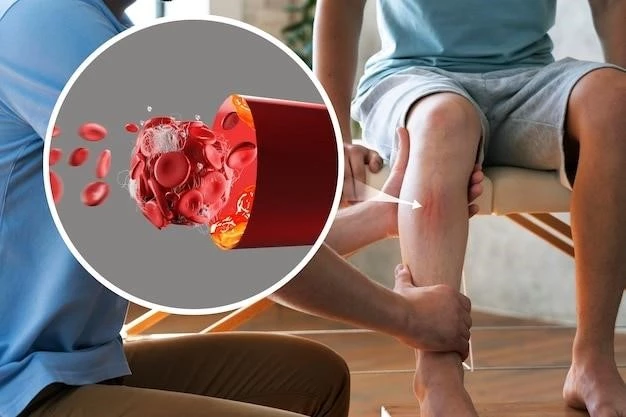- Exact cause unknown
- Immune system overreaction triggers inflammation of blood vessels
Initial signs may include asthma, sinusitis, and skin rashes. Blood tests, biopsies, and imaging help diagnose the condition.
Causes of Churg-Strauss Syndrome
Churg-Strauss Syndrome’s exact cause remains unknown. It is believed to be an autoimmune condition where the body’s immune system mistakenly attacks its tissues. This immune system overreaction results in inflammation of blood vessels, leading to the symptoms associated with the syndrome. While the specific trigger for this abnormal immune response is unclear, various factors such as genetics, environmental triggers, and infections are thought to play a role in the development of Churg-Strauss Syndrome.
It’s essential for individuals diagnosed with Churg-Strauss Syndrome to work closely with their healthcare providers to manage the condition effectively. Understanding the potential factors contributing to the syndrome’s onset can aid in implementing personalized treatment plans and lifestyle adjustments to help improve quality of life and overall well-being.
Symptoms and Diagnosis of Churg-Strauss Syndrome
Churg-Strauss Syndrome presents with a variety of symptoms that can affect multiple organ systems. Initial signs may include asthma, sinusitis, skin rashes, fatigue, weight loss, muscle and joint pain, and peripheral neuropathy. As the condition progresses, individuals may experience more severe symptoms such as lung and heart involvement, gastrointestinal issues, and kidney problems.
Diagnosing Churg-Strauss Syndrome involves a comprehensive evaluation that includes a detailed medical history, physical examination, laboratory tests, imaging studies, and sometimes a biopsy of involved tissues. Blood tests can help detect elevated levels of eosinophils and certain antibodies associated with the condition. Imaging tests like X-rays, CT scans, and MRIs may reveal abnormalities in affected organs. A biopsy of affected tissue can provide conclusive evidence of vasculitis.
Early and accurate diagnosis is crucial in effectively managing Churg-Strauss Syndrome and preventing complications. If you are experiencing persistent symptoms suggestive of the condition, it is essential to consult a healthcare professional promptly for further evaluation and appropriate diagnostic testing.

Treatment Options for Churg-Strauss Syndrome
Managing Churg-Strauss Syndrome typically involves a multidisciplinary approach tailored to the individual’s specific symptoms and disease severity. Treatment aims to suppress the abnormal immune response, reduce inflammation, alleviate symptoms, and prevent organ damage.
Immune-suppressing medications such as corticosteroids, cyclophosphamide, azathioprine, and rituximab are commonly used to control the immune system’s overactivity and reduce inflammation in blood vessels. Biologic agents like mepolizumab may target specific immune cells involved in the pathogenesis of the disease.
In addition to pharmacological interventions, lifestyle modifications such as regular exercise, a balanced diet, smoking cessation, and stress management can contribute to overall well-being and help manage symptoms of Churg-Strauss Syndrome. Consulting with healthcare providers specializing in vasculitis is crucial for developing a comprehensive treatment plan that addresses individual needs and concerns.
Prognosis and Complications of Churg-Strauss Syndrome
The prognosis of Churg-Strauss Syndrome varies from person to person and is dependent on factors such as the severity of organ involvement, response to treatment, and overall health. With early diagnosis and appropriate management, many individuals can achieve remission and lead fulfilling lives.
However, if left untreated or poorly controlled, Churg-Strauss Syndrome can lead to serious complications. Complications may include organ damage, particularly affecting the lungs, heart, nervous system, skin, gastrointestinal tract, and kidneys. Long-term inflammation in blood vessels can result in issues like pulmonary embolism, heart failure, peripheral neuropathy, gastrointestinal bleeding, and kidney failure.
Regular monitoring and compliance with treatment plans are crucial to minimize the risk of complications and optimize outcomes for individuals with Churg-Strauss Syndrome. It’s essential to work closely with healthcare providers to address any new or worsening symptoms promptly and adjust treatment strategies as needed to maintain disease control and quality of life.
Difference between Churg-Strauss Syndrome and other Vasculitis Disorders
Churg-Strauss Syndrome (CSS) is a form of systemic vasculitis that primarily affects small to medium blood vessels. One key feature that distinguishes CSS from other vasculitis disorders is the presence of eosinophilia, an elevated level of eosinophils in the blood, which is a type of white blood cell associated with allergies and parasitic infections.
Unlike some other vasculitis disorders such as Granulomatosis with Polyangiitis (GPA) and Microscopic Polyangiitis (MPA) which primarily involve the upper respiratory tract and kidneys, CSS often presents with asthma, sinusitis, and skin manifestations in addition to systemic vasculitis. CSS is also characterized by the presence of granulomas in affected tissues, which are not commonly seen in other forms of vasculitis.
Understanding the distinctive features of Churg-Strauss Syndrome compared to other vasculitis disorders is essential for accurate diagnosis and appropriate management. Healthcare providers specializing in rheumatology and vasculitis can provide insights into the specific nuances of CSS and guide patients towards the most effective treatment options tailored to their condition.
Research and Innovations in Churg-Strauss Syndrome
Ongoing research in the field of Churg-Strauss Syndrome (CSS) focuses on further understanding the underlying mechanisms of the disease, improving diagnostic techniques, and exploring innovative treatment strategies to enhance outcomes for patients. Studies are investigating the role of specific immune cells and cytokines in the pathogenesis of CSS, which may lead to targeted therapies in the future.
Emerging technologies such as genetic profiling and biomarker identification aim to personalize treatment approaches based on individual genetic predispositions and disease markers. Clinical trials evaluating new medications, including biologics and small molecules, offer hope for improved disease control and reduced side effects compared to traditional immunosuppressive agents.
Patient registries and collaborative research efforts are essential in advancing the knowledge of CSS, facilitating data sharing among clinicians, researchers, and patients to enhance clinical care and support ongoing investigations. Staying informed about the latest developments in CSS research can empower patients and healthcare providers to make informed decisions regarding treatment options and contribute to the progress of understanding and managing this complex vasculitis disorder.
Lifestyle Management for Churg-Strauss Syndrome Patients
Lifestyle plays a significant role in managing Churg-Strauss Syndrome (CSS) and promoting overall well-being. Adopting healthy habits can complement medical treatments and help individuals cope with the challenges of living with a chronic autoimmune condition.
Regular exercise, tailored to individual abilities, can improve strength, flexibility, and cardiovascular health. Consult with healthcare providers or physical therapists to develop a safe exercise plan that considers any limitations imposed by CSS-related symptoms.
Eating a balanced diet rich in fruits, vegetables, whole grains, lean proteins, and healthy fats can support immune function and reduce inflammation. Avoiding processed foods, excess sugars, and saturated fats may help manage CSS symptoms and prevent complications.
Stress management techniques such as mindfulness, meditation, yoga, or social support can assist in coping with the emotional and psychological aspects of living with CSS. Prioritizing adequate rest and sleep is crucial for managing fatigue and promoting overall health.
Quitting smoking and limiting alcohol intake are important lifestyle modifications for CSS patients, as they can worsen inflammation and impact treatment efficacy. Engaging in activities that bring joy and relaxation can enhance quality of life and resilience in the face of chronic illness. Consult with healthcare professionals and consider joining support groups to connect with others facing similar challenges and access valuable resources for managing CSS on a day-to-day basis.
Support Resources for Individuals with Churg-Strauss Syndrome
Living with Churg-Strauss Syndrome (CSS) can present unique challenges, and accessing a supportive network can greatly enhance the management of the condition. There are several support resources available to individuals with CSS to provide guidance, encouragement, and information⁚
- Online Support Groups⁚ Joining virtual communities or forums dedicated to CSS allows individuals to connect with others facing similar experiences, share coping strategies, and gain emotional support.
- Patient Advocacy Organizations⁚ Organizations like the Vasculitis Foundation provide valuable resources, educational materials, and advocacy efforts to support CSS patients and their families.
- Healthcare Team⁚ Building a collaborative relationship with rheumatologists, immunologists, and other healthcare providers specializing in vasculitis can ensure comprehensive care and access to the latest treatment options.
- Mental Health Professionals⁚ Seeking support from psychologists or counselors can help individuals navigate the emotional impact of living with a chronic illness and develop strategies to maintain mental well-being.
- Caregivers and Loved Ones⁚ Family members and friends can offer practical assistance, emotional support, and encouragement to individuals managing CSS.
- Educational Workshops and Events⁚ Participating in seminars, webinars, or conferences about CSS can provide updates on research advancements, treatment options, and self-care strategies.
Exploring these support resources can empower individuals with CSS to navigate their health journey with resilience, knowledge, and a sense of community.
Conclusion
In conclusion, Churg-Strauss Syndrome (CSS) is a complex vasculitis disorder that requires a comprehensive approach to diagnosis, treatment, and management. While the exact causes of CSS remain unclear, advancements in research and innovative treatments offer hope for improved outcomes for individuals living with this condition.
Early recognition of symptoms, prompt diagnosis, and collaboration with a knowledgeable healthcare team are crucial in effectively managing CSS and minimizing complications. Treatment options such as immune-suppressing medications and lifestyle modifications play integral roles in controlling inflammation, reducing symptoms, and improving quality of life.
Understanding the distinctive features of CSS compared to other vasculitis disorders can aid in accurate diagnosis and tailored treatment plans. Lifestyle adjustments, including regular exercise, healthy nutrition, stress management, and support from resources like patient advocacy organizations and online communities, can significantly contribute to overall well-being for CSS patients.
By staying informed about the latest research developments, utilizing available support resources, and actively participating in their healthcare journey, individuals with Churg-Strauss Syndrome can navigate the challenges of the condition with resilience and empowered self-care strategies. With a holistic approach combining medical interventions, lifestyle modifications, and a strong support network, individuals can strive towards optimal health and a better quality of life despite the complexities of CSS;
